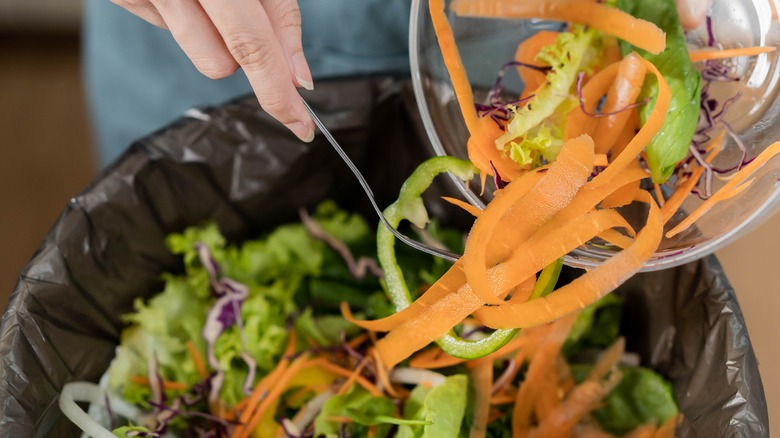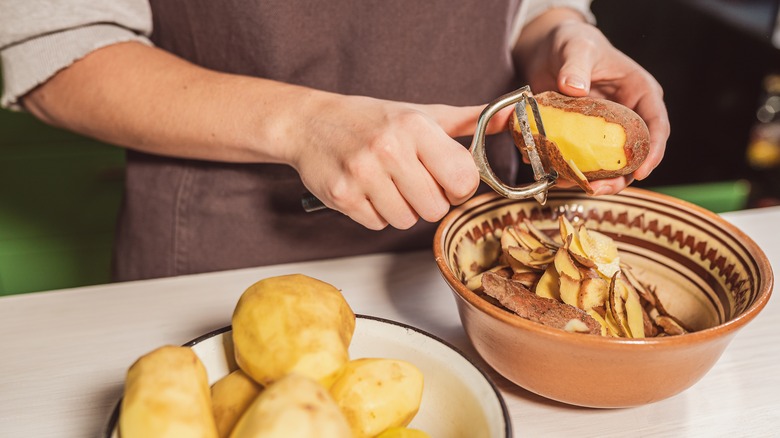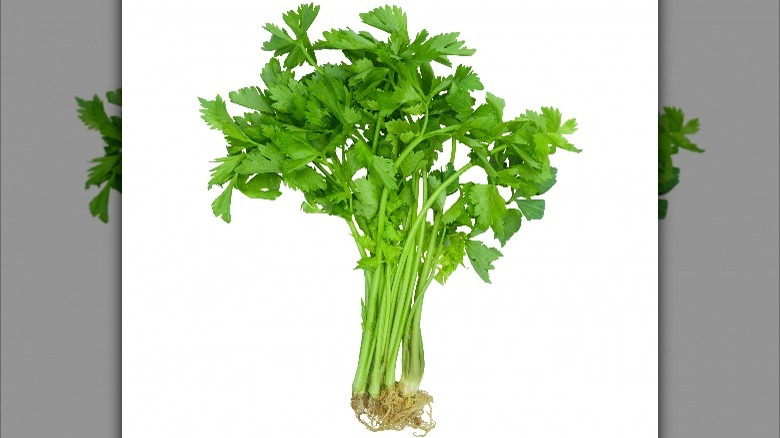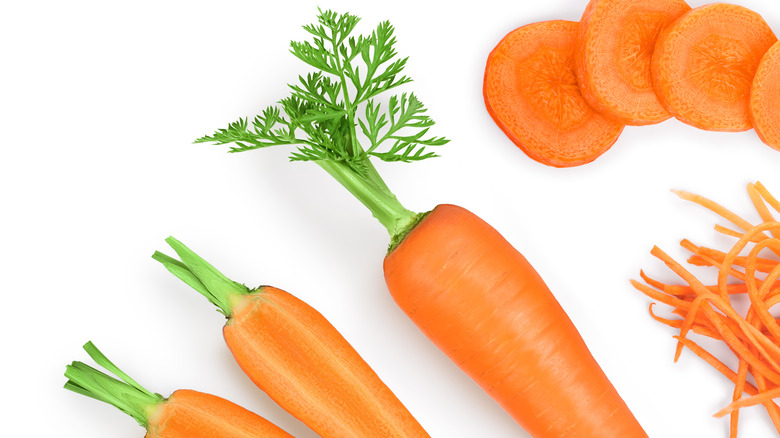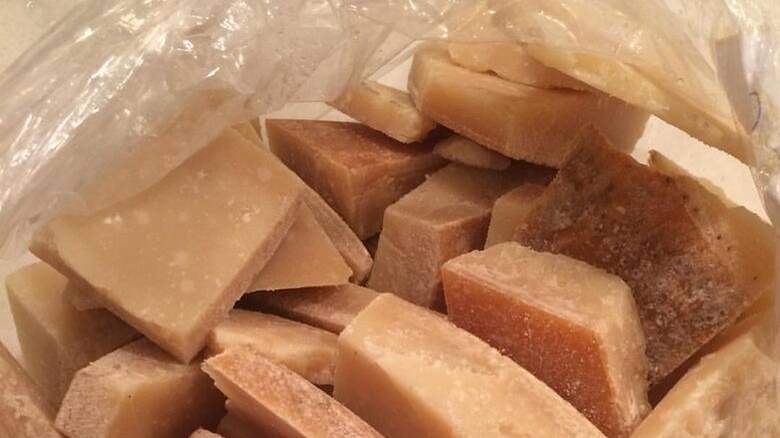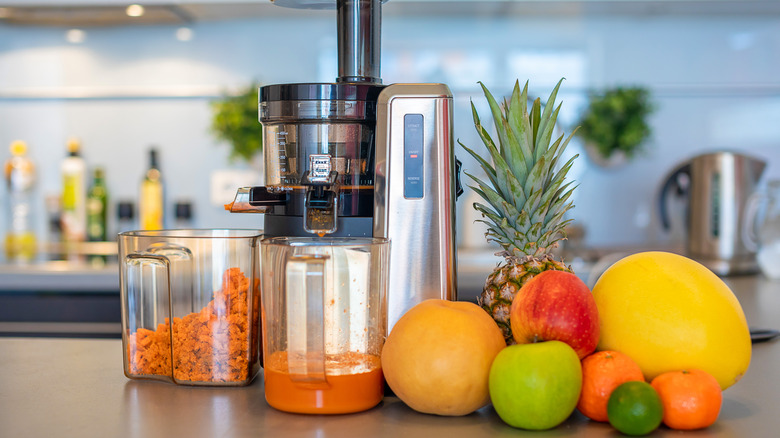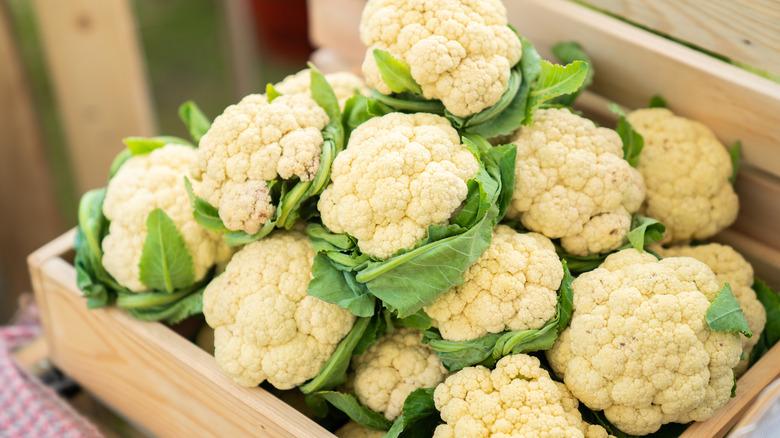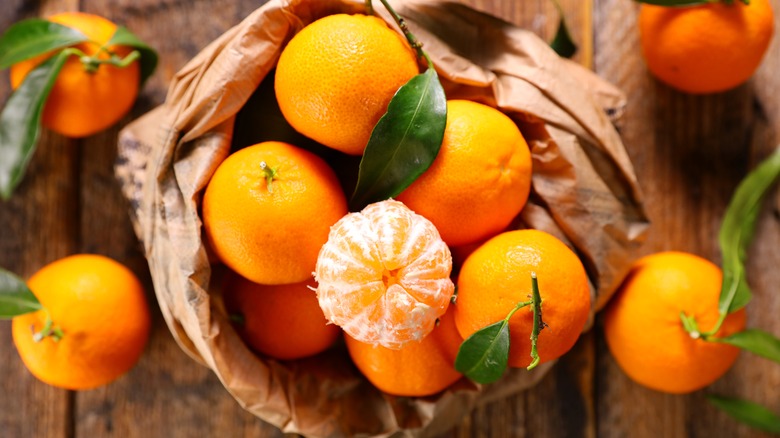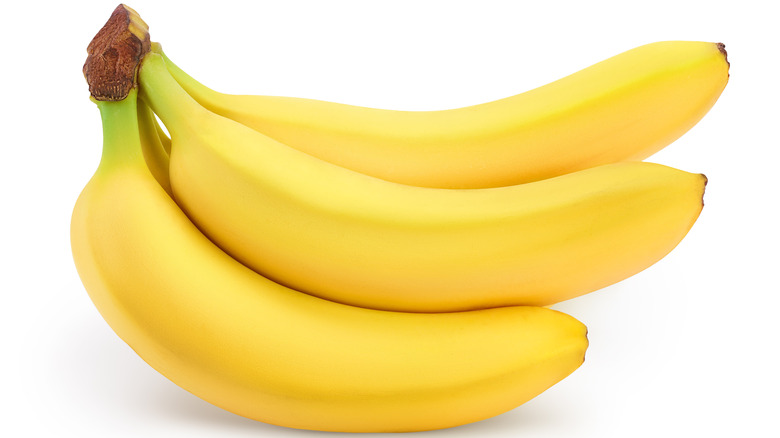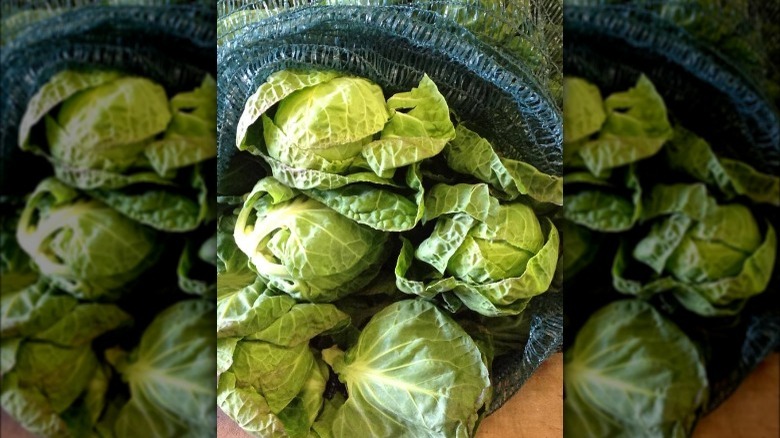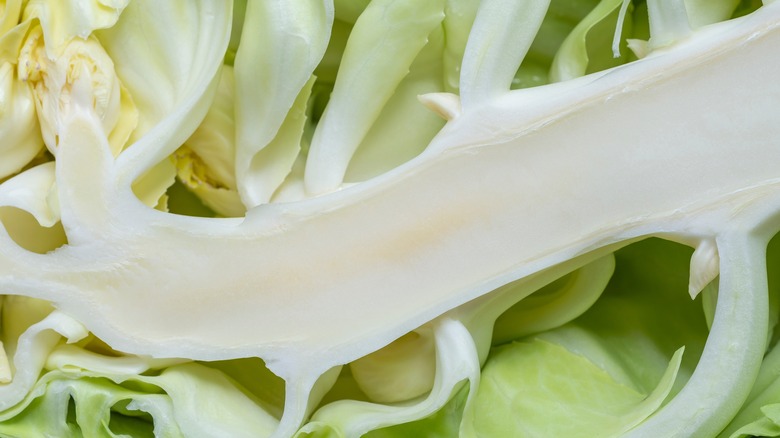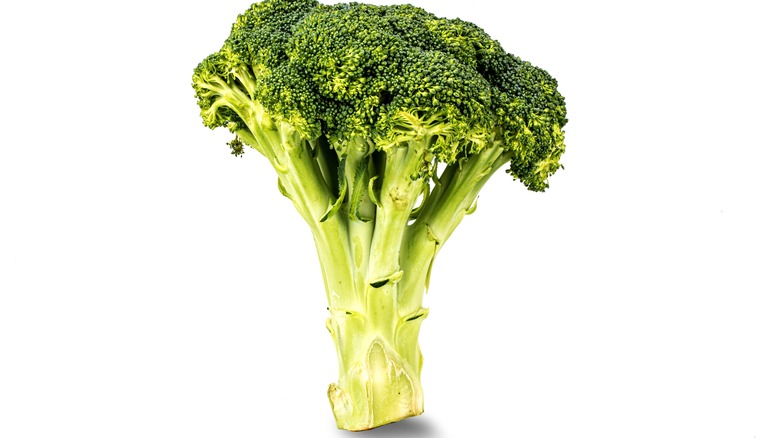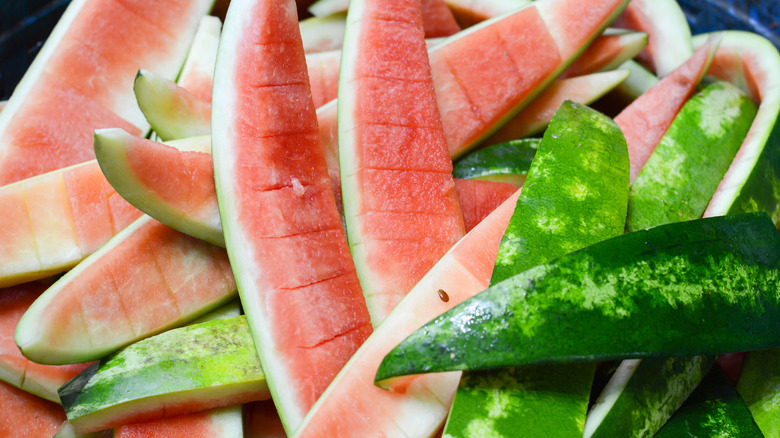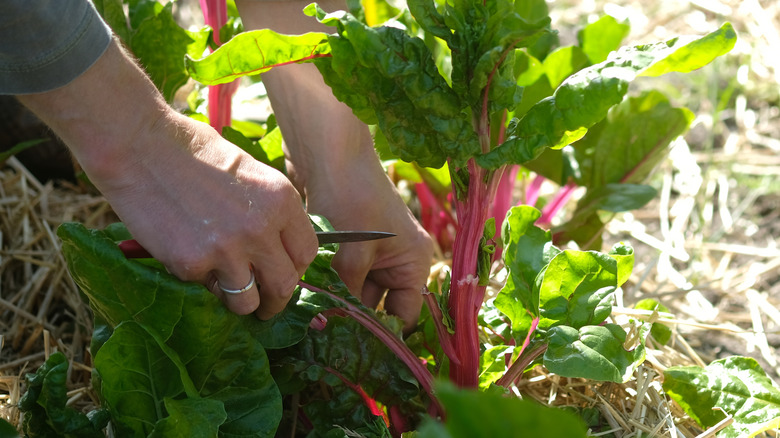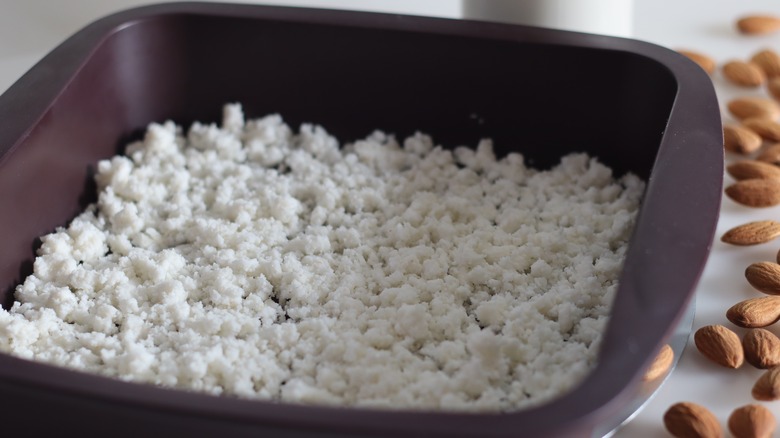14 Food Scraps You Didn't Know Were Edible
Did you know that we waste almost one-third of the global food produced annually? This amounts to nearly 1.3 billion tons, according to the Food and Agriculture Organization of the United Nations, which is quite a lot. So if you've just finished your cooking process and are about to throw all those gorgeous scraps in the bin, you might want to think again.
You'll be surprised to learn that there are many more edible parts to your fruits and vegetables than what you might have been told your entire life. From broccoli stalks to banana peels, cauliflower leaves, and carrot tops, it's likely that you've been tossing away perfectly edible produce in the trash. As per the FDA, nearly 30 to 40% of the food supply is wasted in the U.S. The least we can do is start by eating all of our vegetables and fruits. This article will break down all the myths surrounding food scraps and discuss how you can help prevent food waste by simply eating food parts of your fruits, veggies and nuts you didn't know were edible.
Potato peels
Potatoes are incredibly delicious and versatile, not to mention everyone's favorite. If there were a vegetable convention, the guest of honor would definitely be potatoes. You've probably mastered cooking potatoes in many ways and forms. But what you're probably missing out on are the potato peels. They are edible and chock full of essential nutrients. Cooking spuds with skin on should be all the rage!
According to Foods Guy, potato skins deliver a healthy dose of fiber. Eating peels can improve bone health, and they also have anti-allergic properties. Moreover, peeling the skin off is one less chore to do. Just ensure the potato is thoroughly washed, devoid of deformity, mold, green hues, and eyes.
But that's not the only reason you should eat potatoes with the skin on. It also helps you reduce kitchen waste. Eating potato peels is a good start if you're opting for a zero-waste lifestyle. Among the many ways you can consume potato peels, here are some of the best: Fried potato peels, potato peel chips, and potato peel soup. Get your creative juice flowing and sauté them with onions to make a delicious side dish. You can also dehydrate them and make them a fine potato powder as a seasoning blend (via Montana Happy). And of course, there's always the classic skin-on potato wedges. Delightful, gorgeous, and golden — a must-have for potato lovers.
Herb stalks
If you hate wasting food, you probably hate throwing away the stems and stalks of your herbs. There's actually a use for them! Herb stalks are tasty and full of nutritional benefits, much like the leaves. Keep your wastebasket empty by opting for a no-waste strategy and incorporate some delicious herb stems in your dish.
According to Organic Authority, you can add your scrap herb stems to flavor sauces, soups, and stews. They might be the additional oomph you need to take your dish to the next level. You can add them to dips, like hummus, or grill them with veggies to embed their delicious flavors. Moreover, you can also grind them like dried herbs to make seasoning.
Health addresses the dynamic uses of the unappreciated stems and roots of cilantro and parsley. Loaded with flavor, they are an integral ingredient of many main dishes. From stir-frys to flavoring stocks and oils and using them as a base for marinades, the herb stems may be the unsung hero chefs have been using in their recipes, disregarded by the commoners.
Carrot tops
The myth surrounding carrot tops being poisonous has been debunked and has no scientific basis. In fact, they are actually nutritional and can easily be used in a variety of recipes, including sauces and salads. The only reason carrot greens were ever considered toxic is that they contain alkaloids, organic substances found in many plants which have the potential to become toxic in certain situations, per Mind Body Green. They are full of essential nutrients and are a rich source of vitamin C, magnesium, and fiber.
Carrot tops can be used in an array of dishes, including pasta and stir-fry recipes. But they do seem to have a bitter bite underneath the crunchy flesh. To reduce the unpleasant aftertaste, you can blanch them beforehand. Looking for unique recipe combos that feature the gorgeous carrot crown? Here are a few ideas to stir the pot: Try making a delicious carrot green pesto or carrot green tabouli salad.
What's more, if you're looking for an easy way out, just freeze them along with other leftover veggie scraps. Then when the time comes, you can make delicious and nutrient-dense veggie stock or broth to add to your favorite dish. A Reddit user also suggests making an awesome chimichurri with carrot greens. All you need is some carrot tops, cilantro, jalapeño, garlic, orange zest, and a splash of vinegar, and you have the best recipe for chimichurri.
Parmesan rinds
Who doesn't love cheese? Especially some good, aged parmesan cheese. So, why waste any part of it? We all know that rinds on parmesan cheese develop as a protective layer as they age. While the texture of the rinds might be hard and chewy, that doesn't mean they're not edible. The tough part is still cheese, perhaps with more flavor, but it has been air dried due to the aging process. And unlike other cheese rinds, parmesan rinds do not contain additives and aren't waxy. Since the rinds have depth and richness, they are often a secret ingredient used by professional chefs in different cuisines.
According to The Manual, the rinds are used to flavor broths and sauces. They are typically dropped into a pot and left to slow-cook. This way, all that concentrated flavor is transferred to the sauce or broth to add richness to things like bolognese sauce or chicken noodle soup. The rinds are steeped to extract that wonderfully rich flavor, and the best part is that they won't dominate your stock or sauce base.
Looking for more ideas? Per Oven Via, you can make a parmesan-infused oil. Or, you can steam your veggies alongside some parmesan rinds. This way, the tough exterior will mellow down, and you'll have a healthy, flavorful side dish. Nothing to lose, and so much to gain.
Juice pulp
A glass of juice brimming with delicious nutrients leaves you refreshed and amps up your energy levels. But juicers remove the pulp, and without an after-thought, many of us simply toss the remnants in the garbage can, unsure of what to do with them. But throwing pulp into the compost or waste bin is not the answer. Juice pulps still have nutrients and are a good source of fiber. The Full Helping suggests adding them to soups or salads for an extra kick of flavor. For example, when you've extracted all the juice from cucumber and kale, the remaining pulp can be tossed into a delicious veggie pre-meal appetizer salad.
Once you've downed a glass of homemade juice, it's time to get your own creative juices flowing. You can use the pulp to make vegan crackers. They hold up on their own and are delicious with yummy dips and sauces. Or you can try adding veggie pulp to a soup broth for extra richness.
One of our favorite ways to enjoy vegetable juice pulp is to make a vegan pesto. Not only is it full of health benefits and nutrients, but the flavors taste awesome. Other ways to utilize juice pulp is to add it to smoothies or make veggie burger patties, as this Redditor suggests.
Cauliflower leaves
To pursue healthier eating habits and minimal wastage, you should stop throwing out the cauliflower leaves. Cauliflower makes for a delicious savory dish, and the leaves are also edible and full of flavor. They taste slightly bitter, reminiscent of kale. You can easily swap spinach leaves, kale, and other leafy greens in recipes with tasty cauliflower leaves.
These leaves can also be roasted until crispy with a drizzle of olive oil and salt and pepper seasoning, as per Odd Box. Keep in mind the leaves you want should have the thickest stalk. Then, cut them into 3-centimeter-long strips. Cook them until the heat has turned them a bit charred. Snack-worthy tasty leaves are ready to be served.
Another recipe variety you can add these leaves to is cauliflower leaf soup. Together with the cauliflower stems and parmesan for flavoring, you get a delish soup that leaves your taste buds begging for more. You can also toss the leaves into a stir fry, pesto, or salad if you're feeling lazy. A Quora user notes that the leaves nearest to the head are the most tender and behave similarly to cabbages. You can cook them until they get soft and silky smooth or steam, boil, or roast to enjoy them.
Orange peels
You've probably tasted orange peels — either out of curiosity, or accidentally. Orange peels are bitter and have a lot of zesty flavors that zap your tongue. But did you know there are lots of ways to consume them? If you can get past the bitterness, that is.
Orange peels provide a healthy dose of calcium and potassium, but not much vitamin C as you would expect. They can be used as zest to flavor desserts and salads. You can also make mouth-watering beverages with them, like an orange peel smoothie, as LiveStrong suggests. Moreover, the zest can also be added to cocktails like martinis for that extra hit of freshness.
If you're looking for something sweeter, why not try making a zest orange marmalade or, even better — cover them with sugar and water to turn them into candies, as per Healthline. They'll be soft and delicious with a lovely fruity aroma and vibrant flavors. What's not to love? Finally, a Redditor notes that many Chinese cuisines call for dried tangerine peels, and candied peels are served as a snack. Tangerine beef is one of the many ways you can utilize these citrusy peels while contributing to a healthy, sustainable environment.
Banana peels
Every household countertop is sure to be adorned with a bunch of bananas. Great for snacking, breakfast, or dessert, bananas are a versatile ingredient full of health benefits. But to get the full potential, you should consume the peels too. You might be thinking, the peel? The brownish-yellow thing that rots so quickly? Yes, banana peels are not only edible, but they can be enjoyed in many recipes.
In order to eat banana peels, you have to scrub them well to remove any dirt and residual pesticides. Plus, make sure to remove the head and use ripened bananas. If we've convinced you already, don't go bananas (pun intended) and start biting into a banana with the peel on. You'll only be greeted with an unpleasant bitter flavor. While eating the peels raw is safe, there are other, tastier ways to consume them. A perfectly delicious and healthy smoothie can be made by tossing the entire banana in the blender. As a dessert, make sweet and delectable banana bread with the peels on. You'll be getting a lot of fiber, potassium, and magnesium with these recipes.
If these don't sound appealing to you, try steeping the peels in hot water to make a steaming cup of hot banana tea. You can also fry them or make them into chutney. The banana peel imparts such delightful flavors that it sounds too good to be true. Have a taste, and you'll wonder why you have wasted this peel all your life.
Sprout tops
Word on the street is that Brussels sprout tops are the new thing. What used to lie tossed in the garbage without an afterthought is now the star of the show. Sprout tops are the gorgeous purple and green leaves that grow atop the crown. Many people liken their taste to a cross between broccoli and cabbage.
They mellow down wonderfully and add a depth of flavors to any dish. Moreover, they have all the same nutritional benefits as Brussels sprouts and are rich in glucosinolates. This organic compound fights against cancer (via The Guardian). Like many leafy greens, these tops can also be chopped and tossed into salads. They are wonderful when steamed or roasted; even sautéing them with other veggies brings out the flavors. According to Eating Expired, add some red pepper flakes, garlic, and a splash of olive oil, and you have the healthiest on-the-go snack.
If that's not enough, add them to your sandwich in place of lettuce, or make a green smoothie. A Redditor suggests roasting them alongside Brussels sprouts. The user says there's nothing tastier than munching on some crispy, crunchy leaves.
Cabbage hearts
Like you, we have been tossing cabbage cores in the waste bin, thinking they have nothing more to offer. But we couldn't be more wrong. Cabbage cores are very much a tasty vegetable all by themselves. They are similar to radishes, crunchy and slightly bitter. Boss The Kitchen likens them to broccoli, too.
You'd be surprised to know that you can consume cabbage cores in many ways. For instance, you can stir fry them to make a yummy side dish or roast them with olive oil to really get the earthy flavor out. Don't forget to spice it up with your favorite seasonings.
You can also add extra crunch to your coleslaw by adding chopped cabbage cores to the mix. Who doesn't want that? According to Life Hacker, you can also eat cabbage cores raw or blend them to add to broth and soup. The stems will add depth and richness while flavoring the broth with mildly sweet undertones. If you're looking to take things up a notch, fry them like tempura, and you'll find the entire dish gone and consumed within minutes. Finally, this Redditor lends us a wonderful idea: Why not make some delicious sauerkraut with the stalks? It's delicious and healthy.
Broccoli stalks
Broccoli was one of those veggies we never wanted to eat growing up, but part of venturing into adulthood was finding out that broccoli is actually delicious. If you didn't yet know that broccoli stalks are just as flavorful and healthy, then your journey is about to be complete.
We all love those cute little florets. They bring such vibrancy and freshness to the plate, while the stems are just regarded as meh. However, according to SBS, the outer layers of the broccoli stalks are crunchy when raw, but when cooked, their centers become juicy, so there's a lot of uses for them. What's more amazing is that the stems actually contain more nutritional value than the florets.
Next time you cook with broccoli, incorporate the entire thing in your recipe, as this delectable veggie is rich in calcium, vitamin C, and iron. When cooked, the stalks impart a lovely aromatic and earthy flavor. They make an excellent addition to slaws and salads as well. But if you want to get real creative, slice them up really well and fry them like potatoes to make delicious stem fries. Add them to soups, toss them in broth, or make a delicious pesto. Any way you use them, broccoli stems are worth the trouble.
Watermelon rinds
Watermelons are the juiciest, tastiest berries out of all. If that's news to you, you're in for an even bigger treat. The entire thing, including the rind, is edible. If you're that much of an enthusiast, you can dig into it, teeth first, chomping on the rind to get to the innards. But let's not get ahead of ourselves, especially since no one has teeth made of adamantium.
If you've already finished eating the gorgeous red bit, then you're probably left with the rind. Don't throw it in the trash; it still has a lot to offer. Watermelon rinds can be cooked, juiced, or made into chutney. As LiveStrong notes, the rinds carry loads of nutritional value and health benefits, including keeping your vessels and heart healthy and pumping. Moreover, they are particularly good for their libido-boosting benefits for men, per Healthline.
There are many ways you can consume these rinds. You can juice them or add them to smoothies. Or cook them alongside your veggies (but thinly slice them so they can cook down easily). They can also be pickled, turning acidic and giving you a tart, crunchy bite (via Country Living).
Beet greens
Beet greens are the green part of beets (duh). They're the leaves and stems of beetroot plants, and they're perfectly edible and delicious. Not to mention, they come with their own set of nutritional values and benefits. Like many leafy greens, these bad boys are also full of iron and vitamin C — good news for your immune system. They're also rich in vitamin K, which can help improve bone strength and provide your daily dose of magnesium (via Greatist).
Now coming to the good part, here's how to eat them. As The Guardian notes, you can make an awesome Iranian yogurt dip, known as beetroot leaf borani, just bursting with fresh and earthy flavors. All you need are some common ingredients, like garlic, lemon, olive oil, and seasoning to take things up a notch. Add yogurt and some chopped nuts and viola; your dip is all ready to be licked clean straight from the bowl.
According to Greatist, you can also use beet leaves in salads. Add some feta cheese into the mix, and you'll have a bowl of calcium overload. Moreover, you can also cook them with pink beans and parmesan to make a healthy, hearty meal.
Almond milk pulp
Almond milk is a delicious vegan milk substitute for those with lactose intolerance. People who like to make their own often throw away the byproduct once they strain the milk — the pulp.
According to The Healthy Chef, there are ingenious ways to utilize the leftover pulp. The nuts are full of essential nutrients. So why waste the pulp? Bake the leftover pulp for half an hour at 300 F. Mix it frequently and make sure it dries well, and you'll have your very own homemade almond flour. With almond flour, you can make macaroons!
The Healthy Chef also notes that you can also make some delicious healthy vegan crackers with the almond pulp, sunflower seeds, olive oil, some salt, and flax seeds. It's the epitome of a healthy and delicious snack all in one. You can also bake some delicious snackable homemade granola or crumble it atop fruits by mixing the pulp with some sweet sugar syrup. As per One Green Planet, the almond pulp can also be used to make a tasty almond spread, or you can even make vegan burgers with it. The sky's the limit, and the possibilities are endless.
